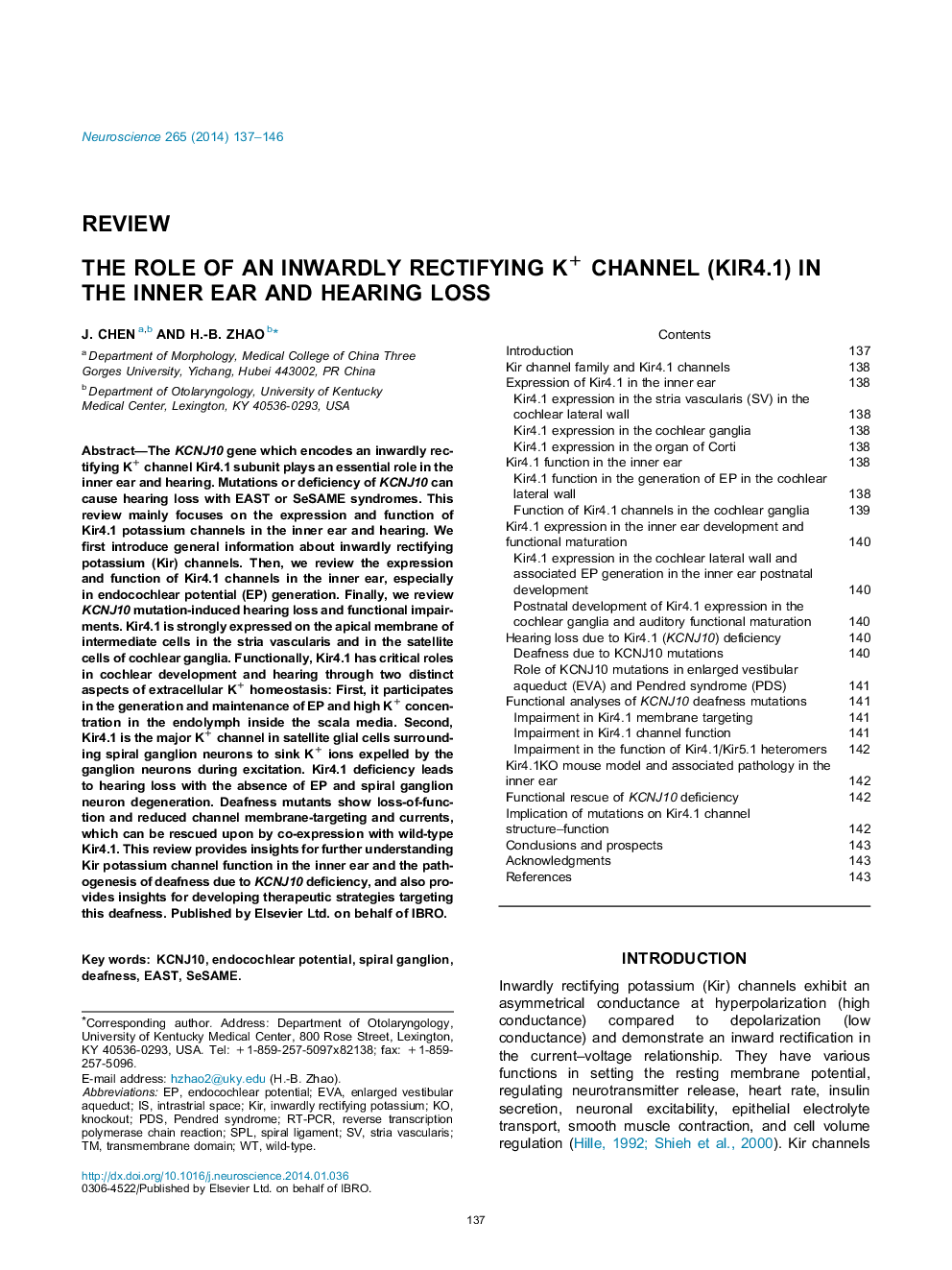| کد مقاله | کد نشریه | سال انتشار | مقاله انگلیسی | نسخه تمام متن |
|---|---|---|---|---|
| 6274044 | 1614811 | 2014 | 10 صفحه PDF | دانلود رایگان |

- Kir4.1 (KCNJ10) is required for EP and spiral ganglion function in the inner ear.
- Deficiency of Kir4.1 causes deafness with EAST or SeSAME syndromes.
- Deafness mutants show “loss of function” and can be rescued by WT isoform.
- Deafness mechanisms of Kir4.1 deficiency are discussed and prospected.
The KCNJ10 gene which encodes an inwardly rectifying K+ channel Kir4.1 subunit plays an essential role in the inner ear and hearing. Mutations or deficiency of KCNJ10 can cause hearing loss with EAST or SeSAME syndromes. This review mainly focuses on the expression and function of Kir4.1 potassium channels in the inner ear and hearing. We first introduce general information about inwardly rectifying potassium (Kir) channels. Then, we review the expression and function of Kir4.1 channels in the inner ear, especially in endocochlear potential (EP) generation. Finally, we review KCNJ10 mutation-induced hearing loss and functional impairments. Kir4.1 is strongly expressed on the apical membrane of intermediate cells in the stria vascularis and in the satellite cells of cochlear ganglia. Functionally, Kir4.1 has critical roles in cochlear development and hearing through two distinct aspects of extracellular K+ homeostasis: First, it participates in the generation and maintenance of EP and high K+ concentration in the endolymph inside the scala media. Second, Kir4.1 is the major K+ channel in satellite glial cells surrounding spiral ganglion neurons to sink K+ ions expelled by the ganglion neurons during excitation. Kir4.1 deficiency leads to hearing loss with the absence of EP and spiral ganglion neuron degeneration. Deafness mutants show loss-of-function and reduced channel membrane-targeting and currents, which can be rescued upon by co-expression with wild-type Kir4.1. This review provides insights for further understanding Kir potassium channel function in the inner ear and the pathogenesis of deafness due to KCNJ10 deficiency, and also provides insights for developing therapeutic strategies targeting this deafness.
Journal: Neuroscience - Volume 265, 18 April 2014, Pages 137-146